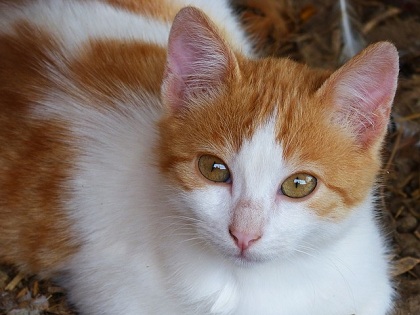Dry Nose in Cats
Dry Nose in Cats
Dry Nose in Cats
For many people, dry nose is a warning sign of underlying health problem in cats. However, even though feline experts confirm that dry nose could be a sign of illness in cats, it is not enough to diagnose health issue. Namely, a majority of cats have a wet and cool nose. But, there are cats who are healthy but occasionally can have a dry nose. Sometimes, the warm and dry nose appears as a result of changes in humidity and temperature in their surroundings. In winter, when many cats spend a lot of time in front of a heater or any other source of heat, their noses become dry and warm. During summer months, it could happen because of their exposure to sunbeams. Sometimes, grooming among cats can cause dry noses. If warm and dry nose occurs solely without any other symptom of illness, we do not have to worry. On the other hand, if a cat sleeps more than usual, refuses to eat, and is less active, then we should take her/him to a vet. Moreover, if vomiting, diarrhea, excessive thirst, changes in litter habits, or weight loss occur, we should immediately visit a professional. In general, lethargic cats with poor appetite and dry noses can suffer from dehydration or fever. It might be that experienced cat owner can determine whether a cat has a fever or is dehydrated, but if we want to be certain, the best way is to consult a veterinarian. To find out more about the dry nose in cats, the article “Ask a Vet: Should a Cat’s Nose Always Be Cool and Moist?” explains this phenomenon in the following excerpt.
If your cat’s nose has always been warm and dry, it’s very unlikely that there’s anything to be worried about. If your cat’s nose is usually cool and moist, and then suddenly becomes warm and dry, your cat may have a fever or be dehydrated (or both — fever almost invariably leads to dehydration in cats). Or not. Sometimes the nature of cats’ nasal secretions varies, fluctuates, or changes permanently over time.
If you are worried about your cat’s dry nose, the safest thing is to have a vet check him. However, you can take his temperature at home (normal feline temperature is 100.0 to 102.5 degrees Fahrenheit). And if you know what you’re doing, you can properly assess him for dehydration using other methods.
Since most people don’t have the experience to properly assess for dehydration, and most people don’t have the desire to insert a thermometer into their cat’s rectum, you can also use another trick. Dehydration and fever generally cause cats to feel sick. Lethargy and poor appetite are very common with either.
Interestingly, feline experts warn us to be aware that overly wet nose in cats can be more dangerous than a dry nose. Sometimes, it appears as a result of kidney treatment with injected fluids. When the volume of fluids exceeds cat’s ability to absorb them, the consequences can be fatal. Another reason to pay attention when cat’s nose becomes overly wet is an infection. In any case, there are no single symptoms that could indicate illness in cats. Only several symptoms and cat’s general condition can suggest that something goes wrong.










